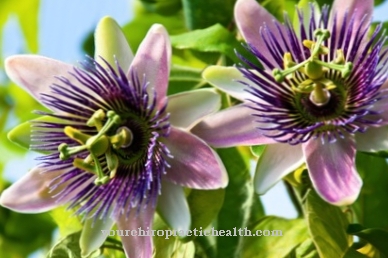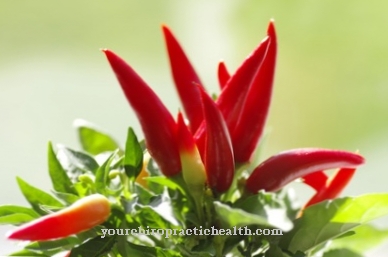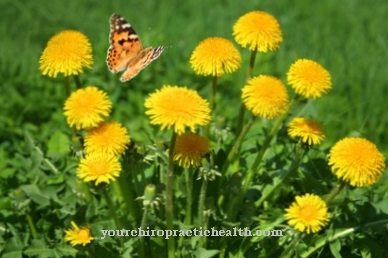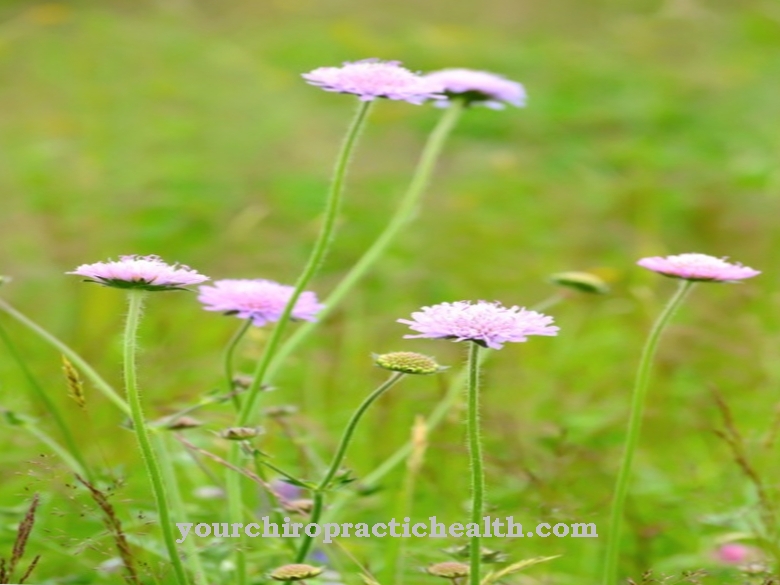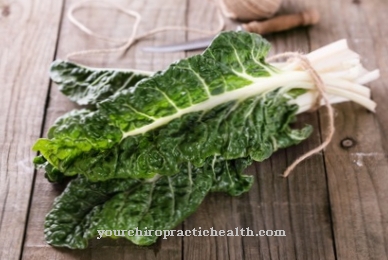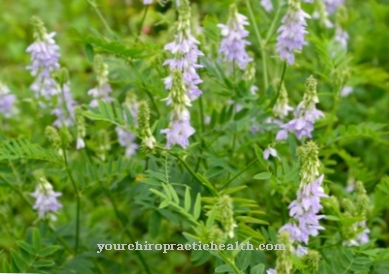Of the Annual mugwort is a medicinal plant of the genus Artemisia from the sunflower family. The Latin name of the plant is Artemisia annua and is composed of the name of the Greek hunting and forest goddess Artemis and the Latin term annus - in English "year".
Occurrence & cultivation of the annual mugwort

Of the Annual mugwort originally from China and Vietnam and can now be found in all humid and humid continental climates in Europe and Asia. For medical reasons it has also been cultivated in Africa and South America for several years. The medicinal plant thrives well when it is warm and prefers to grow in flatlands and on sandy and calcareous soils. There are also individual sites in Germany, especially in the Elbe region.
It is also possible to pull the medicinal plant from seeds in spring and then grow it in the home garden. A bright location and a good water supply are important in this case. A relative of the annual mugwort is that native to Europe Common mugwortwho also goes by the name Mugwort is known. This is particularly widespread in traditional German cuisine and should not be confused with its Asian cousins, which differ in their effectiveness.
The annual mugwort is an herbaceous plant that reaches heights of 0.4 to 1.5 m and gives off a strong ethereal scent of camphor, thyme or mint. Its leaves are pinnately split like fern leaves and the stem is barely hairy or glabrous. Depending on the weather and the environment, the annual mugwort bears inconspicuous white or yellow flowers between July and September. By October, these produce seeds that are roughly the size of grains of sand.
Effect & application
The medicinally important components of the annual mugwort are artemisinin, various essential oils, flavonoids, coumarin, menthol, thymol and beta-sitosterol. The most important ingredient in this list is artemisinin, which was first isolated by a Chinese scientist in the 1970s. This is contained in the plant in a particularly high concentration shortly before flowering and is obtained by extraction with n-hexane.
For a tea made from the leaves and flowers of the annual mugwort, one to two teaspoons of dried plant parts are poured over with a cup of boiling water and then left to steep for ten minutes. In traditional Chinese medicine, the drink is also prepared with cold water and the leaves are squeezed out after the soaking time.
To make a tincture, the leaves of the plant are doused with clear alcohol, such as vodka or grain. The percentage of alcohol should be at least 40 percent to prevent putrefaction. After three to four weeks, the tincture is filtered and then transferred to a dark bottle to protect it from sunlight. The tincture is taken either drop by drop in its pure form or diluted with water.
The dosage should be discussed with a doctor or pharmacist, especially if you are pregnant. The common mugwort contains the substance coumarin, which, for example, provides the woodruff's special aroma and is harmless in low doses. In higher doses, however, coumarin is slightly toxic and causes headaches and nausea. In general, however, the consumption of common mugwort is considered harmless to health.
Importance for health, treatment & prevention
The annual mugwort has been used in traditional Chinese medicine for thousands of years against parasites and malaria and is particularly valuable because of its antibacterial, blood-cleansing and fever-lowering properties. It is also supposed to provide relief for health problems such as colds, digestive problems, menstrual cramps and menopausal symptoms. The artemisin contained in annual mugwort is proven to be one of the most effective substances for fighting malaria and is recommended by the World Health Organization in the event of infection.They are usually given in tablet form and the corresponding drugs are marketed under the names Coartem and Riamet.
However, more recent studies compare the effectiveness of extracted artemisin and untreated annual mugwort and suggest that the natural product is more effective and could reduce the high costs of fighting malaria. The administration of tea, for example, is effective against the tropical disease within three to five days. Artemisinin is also relevant for cancer research, as it has been shown to slow down the growth of tumor cells.
The active ingredient is currently being tested in a study by the German Cancer Research Center in Heidelberg with breast cancer patients. Artemisin is also used to support the respective therapy for leukemia, colon cancer, uterine cancer, prostate cancer and pancreatic cancer. However, the use of artemisinin is particularly successful in treating black skin cancer in the eye, since it does not need to be combined with other drugs.
Another area of application of artemisisin or annual mugwort is the worm disease schistosomiasis. This is transmitted through skin contact with contaminated water and is widespread in Japan, China, the Philippines, Africa, the Arabian Peninsula, South America, the Caribbean, the Middle East and, since 2011, also in Corsica. Due to its blood-purifying effect, the administration of annual mugwort is also promising for this clinical picture, but has not yet been conclusively investigated. The seeds of the medicinal plant can also be used for medicinal purposes.
Prepared as tea, they aid digestion and have an antispasmodic and analgesic effect on stomach and intestinal problems. They also have a preventative effect against heavy night sweats.

